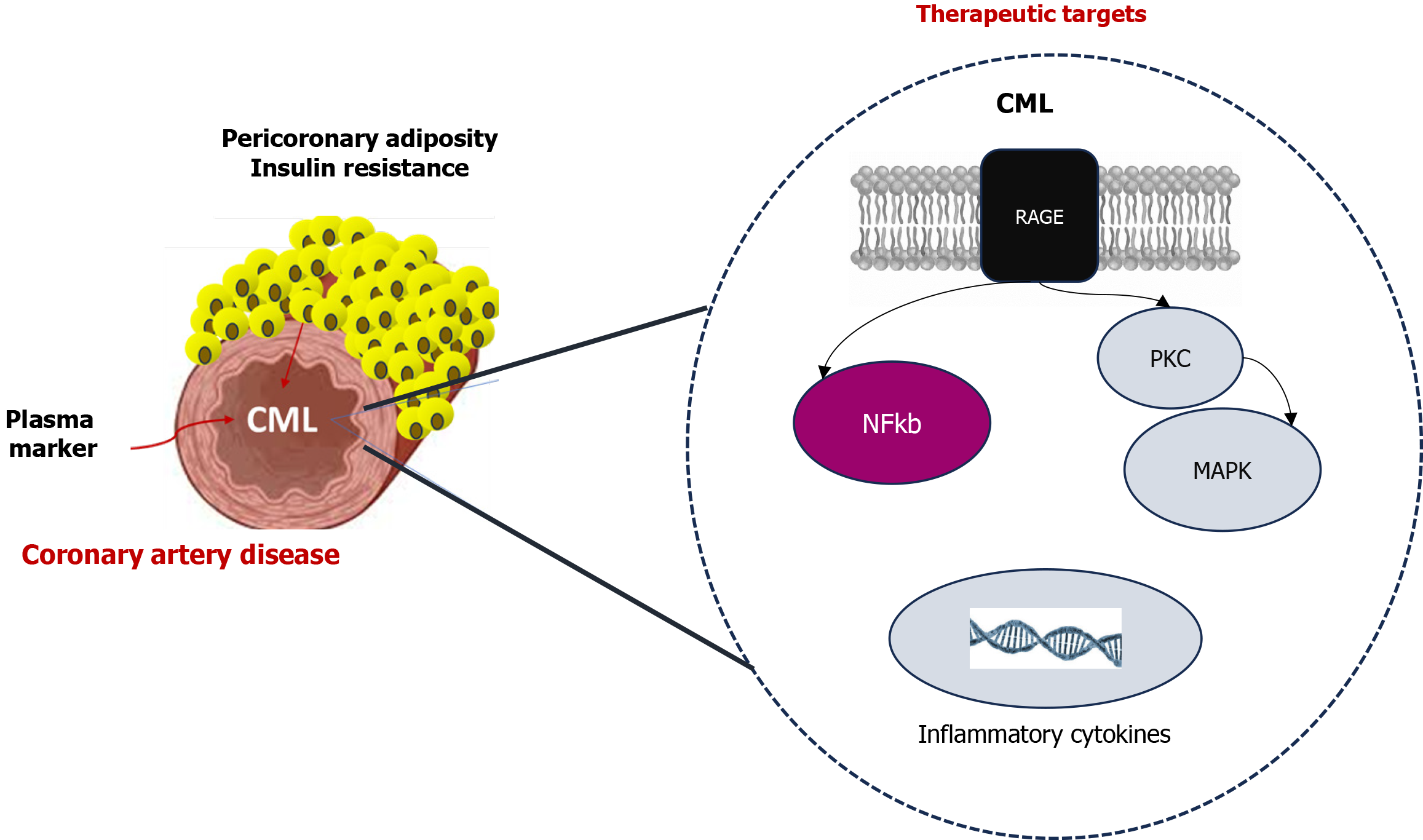Copyright
©The Author(s) 2024.
World J Diabetes. Apr 15, 2024; 15(4): 575-578
Published online Apr 15, 2024. doi: 10.4239/wjd.v15.i4.575
Published online Apr 15, 2024. doi: 10.4239/wjd.v15.i4.575
Figure 1 A summary of Nε-carboxymethyl-lysine signals transduction effects on cells.
The Nε-carboxymethyl-lysine (CML) levels can be induced by an increment of adiposity, insulin resistance, and consequently, circulating glucose levels that modify molecules in a non-enzymatic way. It provokes the advanced glycation end products and CML is one of the most prevalent. But the increment of its levels might be also induced by diet. High levels of CML are markers for coronary artery disease risk. CML can also induce signal transduction and be involved in a pathological mechanism through activation of protein kinase C, mitogen-activated protein kinase, or nuclear factor kappa b, causing muscle cell proliferation or inflammatory cytokines transcription, respectively. CML can be a marker and therapeutic target. CML: Nε-carboxymethyl-lysine; PKC: Protein kinase C; MAPK: Mitogen-activated protein kinase; NFkb: Nuclear factor kappa b.
- Citation: Eiras S. Nε-carboxymethyl-lysine and inflammatory cytokines, markers and mediators of coronary artery disease progression in diabetes. World J Diabetes 2024; 15(4): 575-578
- URL: https://www.wjgnet.com/1948-9358/full/v15/i4/575.htm
- DOI: https://dx.doi.org/10.4239/wjd.v15.i4.575









